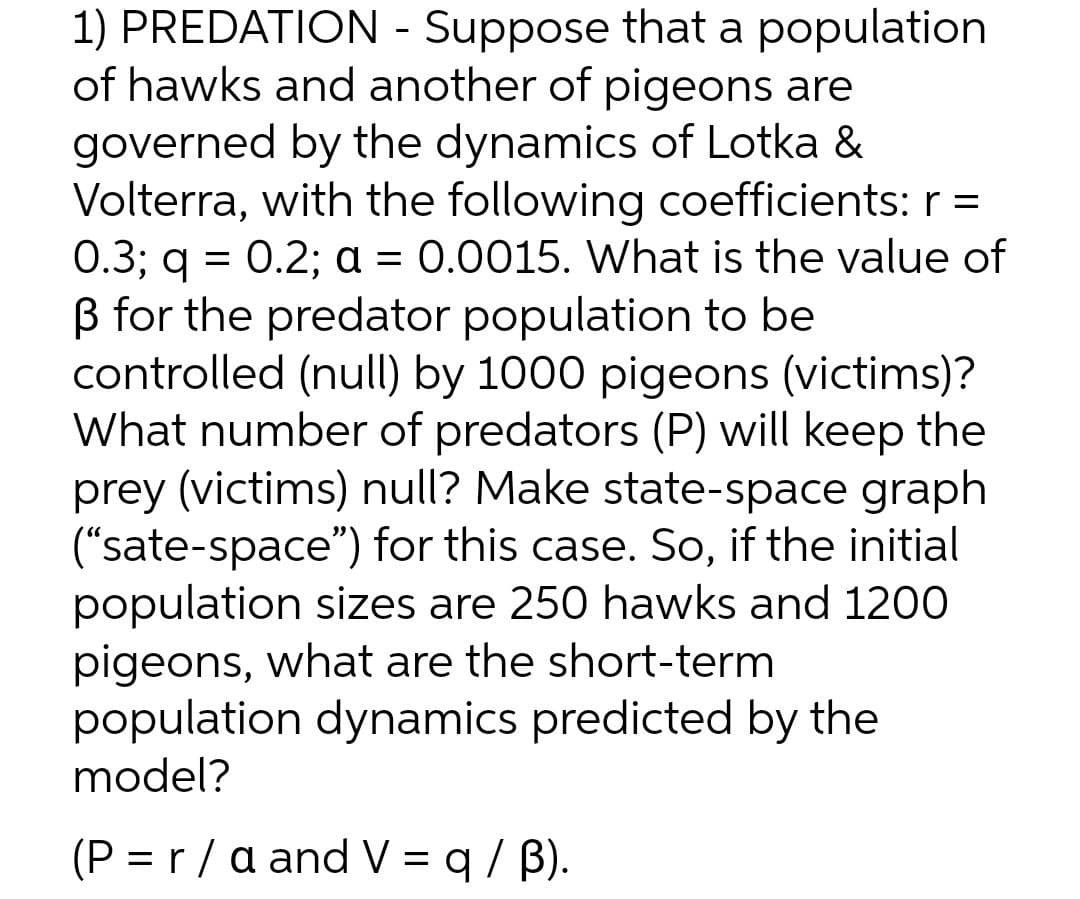1) PREDATION - Suppose that a population of hawks and another of pigeons are governed by the dynamics of Lotka & Volterra, with the following coefficients: r = 0.3; q = 0.2; a = 0.0015. What is the value of B for the predator population to be controlled (null) by 1000 pigeons (victims)? What number of predators (P) will keep the prey (victims) null? Make state-space graph ("sate-space") for this case. So, if the initial population sizes are 250 hawks and 1200 pigeons, what are the short-term population dynamics predicted by the model? (P = r/a and V = q / B).
1) PREDATION - Suppose that a population of hawks and another of pigeons are governed by the dynamics of Lotka & Volterra, with the following coefficients: r = 0.3; q = 0.2; a = 0.0015. What is the value of B for the predator population to be controlled (null) by 1000 pigeons (victims)? What number of predators (P) will keep the prey (victims) null? Make state-space graph ("sate-space") for this case. So, if the initial population sizes are 250 hawks and 1200 pigeons, what are the short-term population dynamics predicted by the model? (P = r/a and V = q / B).
Related questions
Question
100%

Transcribed Image Text:1) PREDATION - Suppose that a population
of hawks and another of pigeons are
governed by the dynamics of Lotka &
Volterra, with the following coefficients: r =
0.3; q = 0.2; a = 0.0015. What is the value of
B for the predator population to be
controlled (null) by 1000 pigeons (victims)?
What number of predators (P) will keep the
prey (victims) null? Make state-space graph
("sate-space") for this case. So, if the initial
population sizes are 250 hawks and 1200
pigeons, what are the short-term
population dynamics predicted by the
model?
а 3D
(P = r /a and V = q / B).
%3D
Expert Solution
This question has been solved!
Explore an expertly crafted, step-by-step solution for a thorough understanding of key concepts.
Step by step
Solved in 4 steps with 1 images
